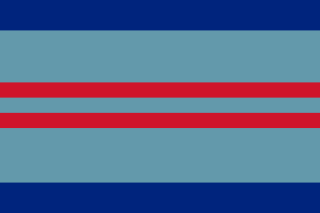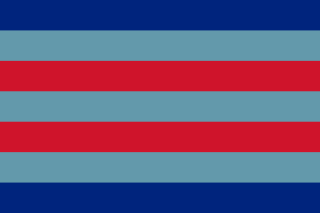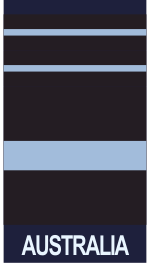
Marshal of the Royal Air Force (MRAF) is the highest rank in the Royal Air Force (RAF). In peacetime it was granted to RAF officers in the appointment of Chief of the Defence Staff (CDS), and to retired Chiefs of the Air Staff (CAS), who were promoted to it on their last day of service. While surviving Marshals of the RAF retain the rank for life, the highest rank to which officers on active service are promoted is now air chief marshal. Although general promotions to Marshal of the Royal Air Force have been discontinued since the British defence cuts of the 1990s, further promotions to the rank may still be made in wartime, for members of the Royal Family and certain very senior RAF air officers in peacetime at the discretion of the monarch; all such promotions in peacetime are only honorary, however. In 2012, the then Prince of Wales was promoted to the rank in recognition of his support for his mother, Queen Elizabeth II, in her capacity as head of the armed forces (commander-in-chief), while in 2014 Lord Stirrup, who had served as Chief of the Air Staff and Chief of the Defence Staff for over seven years, was also promoted.

Air vice-marshal (AVM) is a two-star air officer rank which originated in and continues to be used by the Royal Air Force. The rank is also used by the air forces of many countries which have historical British influence and it is sometimes used as the English translation of an equivalent rank in countries which have a non-English air force-specific rank structure.
Air marshal is an air-officer rank which originated within the Royal Air Force. The rank is used by the air forces of many countries which have historical British influence, including many Commonwealth nations. The rank is usually equivalent to a vice admiral or a lieutenant general.

Air chief marshal is a high-ranking air officer originating from the Royal Air Force. The rank is used by air forces of many countries that have historical British influence. An air chief marshal is equivalent to an Admiral in a navy or a full general in an army or other nations' air forces.
Marshal of the air force or marshal of the air is a five-star rank and an English-language term for the most senior rank in some air forces. It is usually the direct equivalent of a general of the air force in other air forces, a field marshal or general of the army in many armies, or a naval admiral of the fleet.
The rank structure of the Royal Australian Air Force (RAAF) has been inherited from the Royal Air Force (RAF). The RAF based its officer ranks on the Royal Navy, and its airmen ranks on the British Army.
The Australian Defence Force's (ADF) ranks of officers and enlisted personnel in each of its three service branches of the Royal Australian Navy (RAN), the Australian Army, and the Royal Australian Air Force (RAAF) inherited their rank structures from their British counterparts. The insignia used to identify these ranks are also generally similar to those used in the British Armed Forces.

Air chief marshal is the highest active rank of the Royal Australian Air Force and was created as a direct equivalent of the British Royal Air Force rank of air chief marshal. It is also considered a four-star rank. The only time the rank is held is when the Chief of the Defence Force is an Air Force officer.

Air Vice Marshal William Dowling Bostock, was a senior commander in the Royal Australian Air Force (RAAF). During World War II he led RAAF Command, the Air Force's main operational formation, with responsibility for the defence of Australia and air offensives against Japanese targets in the South West Pacific Area. His achievements in the role earned him the Distinguished Service Order and the American Medal of Freedom. General Douglas MacArthur described him as "one of the world's most successful airmen".

Air Marshal Sir Valston Eldridge Hancock, was a senior commander in the Royal Australian Air Force (RAAF). He served as Chief of the Air Staff from 1961 to 1965. A graduate of the Royal Military College, Duntroon, Hancock transferred from the Army to the RAAF in 1929 and qualified as a pilot. His administrative training at Duntroon saw him mainly occupy staff posts, including Deputy Director of Operations and Intelligence at RAAF Headquarters from 1931 to 1935, and Director of Works and Buildings from 1937 to 1939. During the early years of World War II, he commanded No. 1 Bombing and Gunnery School, and held senior planning and administrative positions. He eventually saw combat in the Aitape–Wewak campaign of the Pacific War during 1945. Flying Bristol Beaufort light bombers, he led first No. 100 Squadron, and later No. 71 Wing. His actions earned him the Distinguished Flying Cross.

Air Marshal Sir John Patrick Joseph McCauley, KBE, CB was a senior commander in the Royal Australian Air Force (RAAF). He served as Chief of the Air Staff from 1954 to 1957. A Duntroon graduate, McCauley spent four years in the Australian Military Forces before transferring to the RAAF in 1924. He was Director of Training from 1936 to 1938, and commanded engineering and flying training schools for the first eighteen months of World War II. Having been promoted to group captain in 1940, he was posted to Singapore in June 1941 to take charge of all RAAF units defending the area. He earned praise for his efforts in attacking invading Japanese forces before the fall of Singapore, and for his dedication in evacuating his men. After serving as Deputy Chief of the Air Staff in 1942–44, he was appointed to a senior operational role with the Royal Air Force's 2nd Tactical Air Force in Europe, where he saw out the rest of the war.
Marshal of the Royal Australian Air Force (MRAAF) is the highest rank of the Royal Australian Air Force and was created as a direct equivalent of the British Royal Air Force rank of Marshal of the Royal Air Force. It is considered a five-star rank.

Air Marshal Sir Charles Frederick Read, KBE, CB, DFC, AFC was a senior commander in the Royal Australian Air Force (RAAF). He served as Chief of the Air Staff (CAS) from 1972 to 1975. Born in Sydney, Read joined the RAAF in 1937, and began his career flying biplane fighters. As a Beaufighter pilot, he led No. 31 Squadron and No. 77 Wing in the South West Pacific during World War II. His achievements earned him the Distinguished Flying Cross and a mention in despatches, and he finished the war an acting group captain.

Air Vice Marshal Henry Neilson Wrigley, CBE, DFC, AFC was a senior commander in the Royal Australian Air Force (RAAF). A pioneering flyer and aviation scholar, he piloted the first trans-Australia flight from Melbourne to Darwin in 1919, and afterwards laid the groundwork for the RAAF's air power doctrine. During World War I, Wrigley joined the Australian Flying Corps and saw combat with No. 3 Squadron on the Western Front, earning the Distinguished Flying Cross; he later commanded the unit and published a history of its wartime exploits. He was awarded the Air Force Cross for his 1919 cross-country flight.

Air Vice Marshal Ellis Charles Wackett, CB, CBE was a senior commander in the Royal Australian Air Force (RAAF). Its chief engineer from 1935 to 1959, he served on the RAAF's controlling body, the Air Board, for a record seventeen years, and has been credited with infusing operations with new standards of airworthiness. Commencing his service career as a Royal Australian Navy cadet during World War I, Wackett transferred to the Air Force in 1923 while on an engineering course in Britain. He qualified as a pilot before completing his studies and returning to Australia, where he inaugurated parachute instruction within the RAAF and made the country's first freefall descent from a military aircraft in 1926. The following year, he led a three-month survey flight to Papua New Guinea.

RAAF Command was the main operational arm of the Royal Australian Air Force (RAAF) during World War II. The command was formed in September 1942 and by April 1943 comprised 27 squadrons, including units from the Netherlands, the United Kingdom and the United States, as well as Australia. Coming under the operational authority of Allied Air Forces Headquarters in the South West Pacific Area, RAAF Command exercised control of its units through geographically based area commands in Australia and, later, New Guinea, as well as large mobile formations including the Australian First Tactical Air Force. The command reached a strength of 41 squadrons in October 1944. From the time of its establishment, until its disbandment in September 1945, it was led by Air Vice Marshal Bill Bostock.

Northern Area Command was one of several geographically based commands raised by the Royal Australian Air Force (RAAF) during World War II. It was formed in May 1941, and covered northern Australia and Papua. Headquartered at Townsville, Queensland, Northern Area Command was responsible for air defence, aerial reconnaissance and protection of the sea lanes within its boundaries. In January 1942, following the outbreak of the Pacific War, it was divided into North-Western and North-Eastern Area Commands, to counter Japanese threats to northern Australia and Papua, respectively.

Air vice-marshal is the third highest active rank of the Royal Australian Air Force and was created as a direct equivalent of the British Royal Air Force rank of air vice-marshal. It is also considered a two-star rank. The Australian Air Corps adopted the RAF rank system on 9 November 1920 and this usage was continued by its successor, the Royal Australian Air Force.
No. 5 (Maintenance) Group RAAF was a Royal Australian Air Force (RAAF) group of World War II. It was formed in June 1942 as part of a reorganisation of the air force that saw maintenance functions transferred from area commands to dedicated functional groups. No. 5 (Maintenance) Group was disbanded following the war in January 1946.














